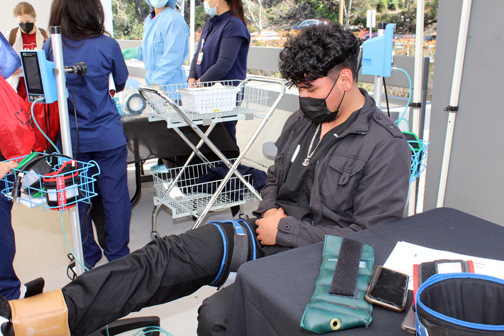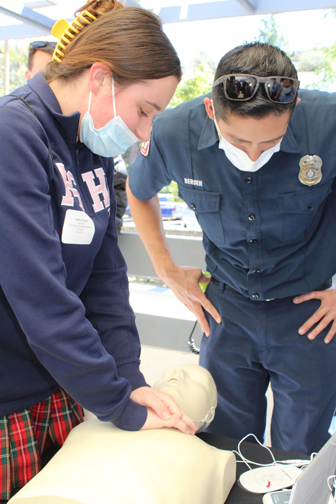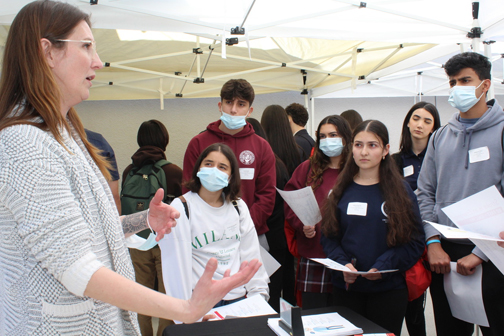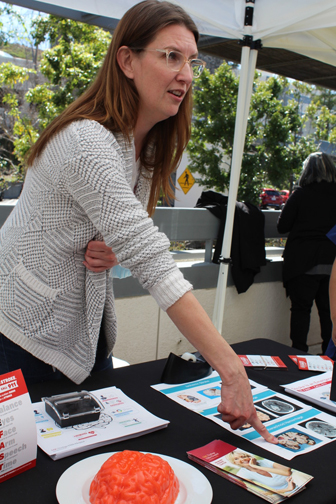Corrected March 30.

Photos by Ruth SOWBY
By Ruth SOWBY
For the fifth year, USC Verdugo Hills Hospital hosted 75 sophomore and junior students from seven local high schools for the hospital’s annual Healthcare Day of Discovery on Friday, March 24. During the event, the students learned more about career opportunities in health care, including working in nursing and as physicians’ assistants, pharmacists and physical therapists.
The highlight of the day was the hands-on activities and training sessions in basic health care tasks. Booths were set up on the hospital’s main floor patio. Students spent about 15 minutes at each booth with medical personnel describing the task at hand such as performing CPR in emergency care, taking vitals in nursing and preparing a sterile IV as a pharmacist and carotid artery screening in radiology.
Ashley Hurjak, 17, an 11th grade student from Flintridge Sacred Heart Academy, took a turn giving CPR compressions on a dummy. She was instructed by EMT Nicholas Waite of the Glendale Fire Dept. For her future medical career, Hurjak is debating going into either pharmaceuticals or pediatrics.

Michelle Brahe, RN, taught her group of students about the human brain. She encouraged the students to touch an orange rubber model of the brain, which had the consistency of hard gelatin, much like the brain itself. Brahe talked about the parts of the brain – the frontal lobe, the temporal lobe, the brain stem, the parietal lobe, the occipital lobe and the cerebellum. She described the functions of the frontal lobe and its control of reasoning, thinking, planning, language, emotions, judgment, motor function, movement and short term memory. Those functions are still developing in the teenage brain. Nabor Maldonado, 17, a 12th grade student at San Fernando High School, wants to become a pharmacist. He found Brahe’s presentation “pretty interesting.”

In her booth, physical therapist Rashmi Bandekar explained blood flow restriction therapy. Students took turns lifting their leg wrapped in a tourniquet to reduce arterial inflow and stop venous outflow in the setting of resistance training or exercise. Jonah Banta, 14, a ninth grader at St. Francis High School, tried the therapy. His father, a pulmonologist, is the director of the ICU at Huntington Hospital in Pasadena. Banta said he “wants to follow [his] father’s footsteps.” Banta also liked the “brain booth” for “a better understanding of strokes.”

Banta ended his hands-on training having nearly memorizing the signs of a stroke according to the acronym BE FAST. It stands for Balance (watch for sudden loss of balance), Eyes (check for vision loss), Face, (look for an uneven smile), Arm (check if one arm is weak), Speech (listen for slurred speech) and Time (call 9-1-1 right away).
USC Verdugo Hills Hospital is a primary stroke center.
